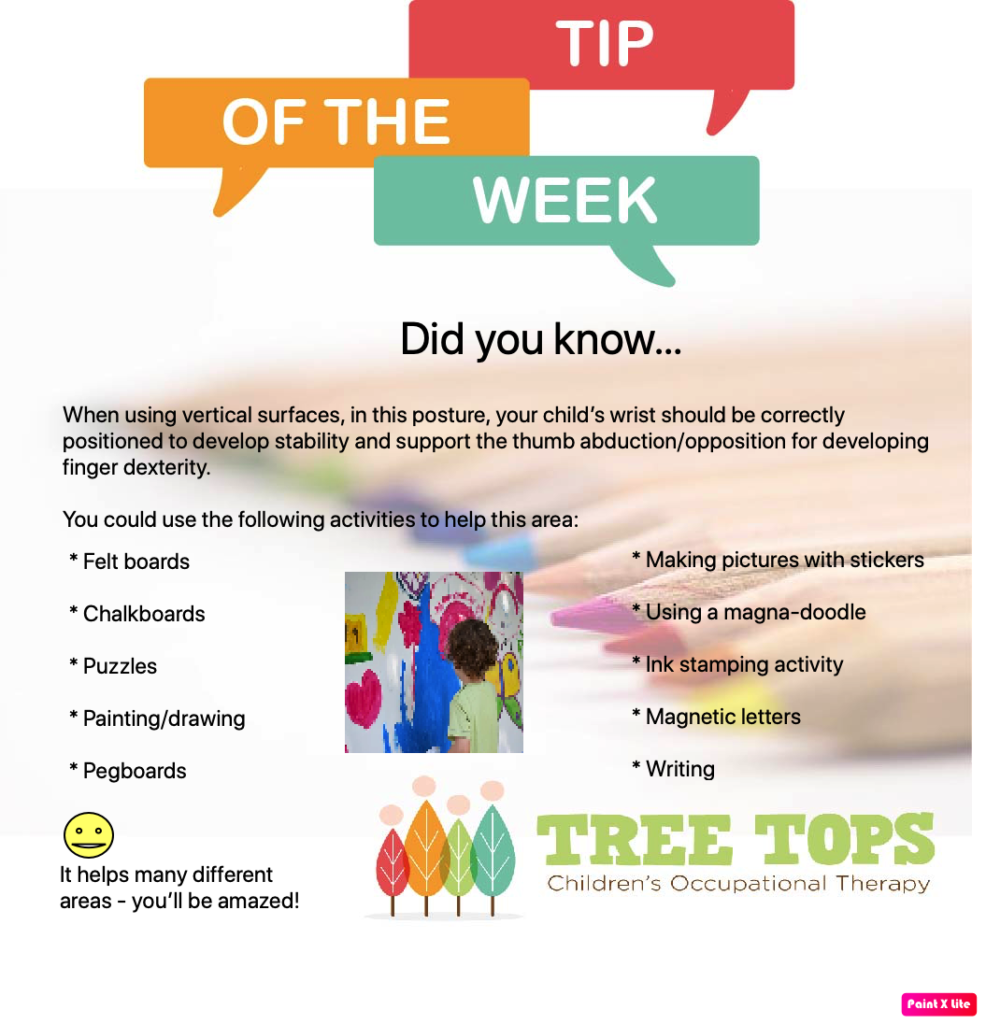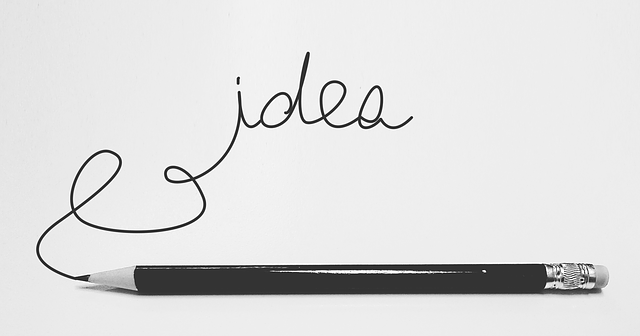Why should children use a vertical surface?

Why should children use a vertical surface? Have you ever thought about the many developmental benefits of writing/working on a vertical surface? No? Here’s why!
- Shoulder stability – the use of much larger vertical surfaces ie white/chalkboards, marker boards etc allows the child to use much bigger arm movements which helps with strength and flexibility in the joints and muscles of upper limb stability. The hand also strengthens because it has to work pretty hard against gravity to make the horizontal, vertical and diagonal lines.
- Posture/core strength – your child could work in a kneeling or standing position at an upright surface. This means it can give them good core strength. They cannot slump or lean on the back of a child whilst doing a vertical activity which then helps core and back muscles.
- Midline crossing – when a child writes/draws along a vertical surface, they also have to cross the midline of their body with the dominant hand. It can also help your child with a main dominance.
- Bilateral coordination – when working on a vertical surface it means your child has to use both hands to keep a piece of paper on that particular surface; one to hold the paper and the other to write/draw. This means they use lots of proprioception and strength.
- Wrist extension/pencil grasp – when writing on a vertical surface it immediately puts the wrist into an extended position. This really encourages hand stabilisation for a better pencil grasp and good control of the writing utensils.
- Spatial awareness – a child working on a large vertical surface will make lots of up, down, left, right movements which is much easier to understand because they can then relate the words to their own body.
- Hand-eye coordination – when the child is working on the vertical surface, it brings the task closer to the child’s eyes. This helps maintain visual attention to activities and also helps encourage hand-eye coordination.
- Sensory – using a vertical surface may help a child who really fidgets or enjoys working better standing rather than sitting.
We all work much better when changing positions.

There are lots of vertical activities you could do to help this area:
- Get your child to place a piece of paper on the wall and draw or even trace objects. Stencils are great too.
- Stickers – stick them at different heights on a wall then give your child a cue on what sticker to point to. (Make sure the stickers are spread apart so your child has to stretch or bend).
- Paint a picture.
- Magnets – if you have a lot of magnets on the fridge, let your child play with them (supervise if your child is small).
- Draw with shaving cream on the wall whilst in the bath (or even shower).
- Felt board – this is a great way to play with felt shapes.
- Chalkboard/easel – great for practicing drawing/letters and numbers.
- Help with washing the car.
Don’t forget, you can do some of these in kneeling too!
So, why should children use a vertical surface? Now you know!
Have a look at some of our handwriting videos and ideas to help handwriting by clicking on the following link: https://www.treetopsoccupationaltherapy.co.uk/tree-tops-clinic-videos-2/
